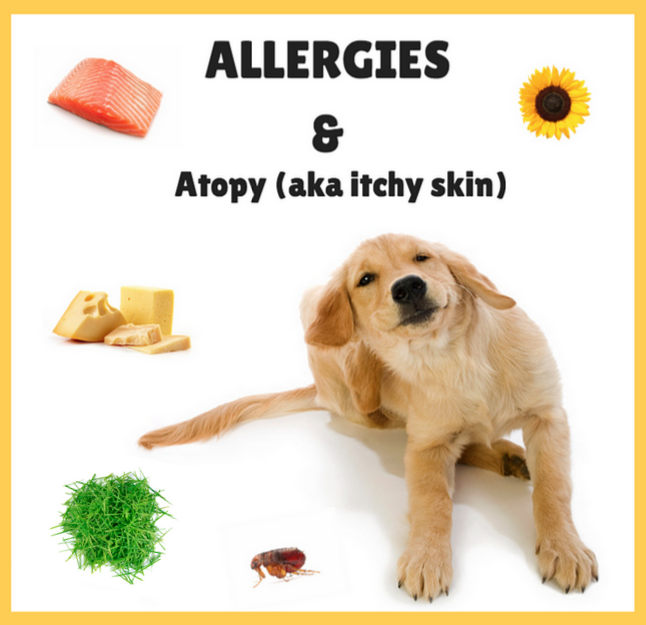The main causes of allergic dermatitis in dogs and cats are pretty straightforward: insect bites, inhaled allergens and food. The clinical signs of all three are similar; your pet is itchy. But determining the cause of the itch can take time and the treatment options vary depending on the source of the itch.
In a recent Novartis Animal Health survey, the percentage of participants whose pets have a diagnosed allergy:
Biting Bugs
Insect bite dermatitis occurs when a pet becomes hypersensitive to the saliva of an insect triggering an intense reaction on the skin. The most common culprit is the flea, although mosquitoes and other biting critters can cause intense itchiness, redness and moist skin. Of all the allergic conditions, flea bite hypersensitivity is the easiest to diagnose, treat and prevent. Modern flea preventives do a fantastic job at controlling the risk of your pet getting a flea bite and most cases of insect bite dermatitis can be resolved quickly with prompt medical intervention.
Tis the Season
Each spring as beautiful cherry blossoms line the streets of Vancouver, I know our 4-legged companions will soon be walking into our veterinary clinic with itchy faces, tummies, feet and ears. We see excessive rubbing of the face, licking and chewing of the skin and paws, or red and inflamed ears.
Atopy is an itchy reaction to pollens, grasses, weeds, dust mites, molds or anything else a pet can inhale or absorb through the skin. Just as people who suffer from allergies get runny, itchy eyes and stuffy noses during the spring and fall, atopy typically affects pets during the same months, when pollen and mold levels are highest. The list of environmental allergens for people is the same for our dogs and cats; the difference is that instead of stuffy noses our pets get itchy.
Patience and perseverance are essential for controlling seasonal allergies. Other conditions such as mange mites, ringworm, fleas and food allergies need to be ruled out. To determine the exact allergens, your pet may be referred to a dermatologist for more comprehensive ‘allergy testing.’
Treatment for your pet generally starts with a corticosteroid, which should provide rapid relief from the itching. Antibiotics or antifungals may be needed to treat any skin infections caused by the licking and chewing. For many pets, long-term management with antihistamines, fish oils, frequent shampooing, Atopica or a new drug called Apoquel is often needed.
60-70% of atopic pets can benefit from ‘allergy shots:’ a series of injections administered over several months, containing increasing amounts of allergens, in an attempt to reduce the body’s adverse reaction. This is a good option for the severely atopic, itchy pets.
Was it something I ate?
It’s hard to distinguish between food and environmental allergies. One of the tell tale signs that food is the cause is that itching rarely stops regardless of the season. To determine if food allergy is the culprit, a food elimination trial is needed. Your pet will need to be fed a hypoallergenic diet for about 12 weeks. To determine the right ingredients for your pet’s diet trial, an in depth food history should be done with your veterinarian. Despite common myths, there is NOT one ‘allergy provoking’ food, such as wheat, that is the cause for all food allergies in pets, which is why a discussion with your family veterinarian is important before embarking on a trial. Once you and your veterinarian determine which ingredients your pet should avoid, a commercial diet based on a novel protein or a home-made diet is followed. During the 12-week period, it is important to avoid all other foods, treats or chews. If your pet’s itch improves during this time period and the itching quickly returns when you reintroduce the original diet, then a food allergy is confirmed.
For some unlucky pets, the list of things they are allergic to can be quite long. It may include a list of both environmental and food allergens. Patience and follow ups with your veterinarian are necessary for success. The goal is not to make your pet allergy free but to have them itch free. While there is no cure for allergies, there are many steps that can be taken to manage the condition and provide your pet relief.



